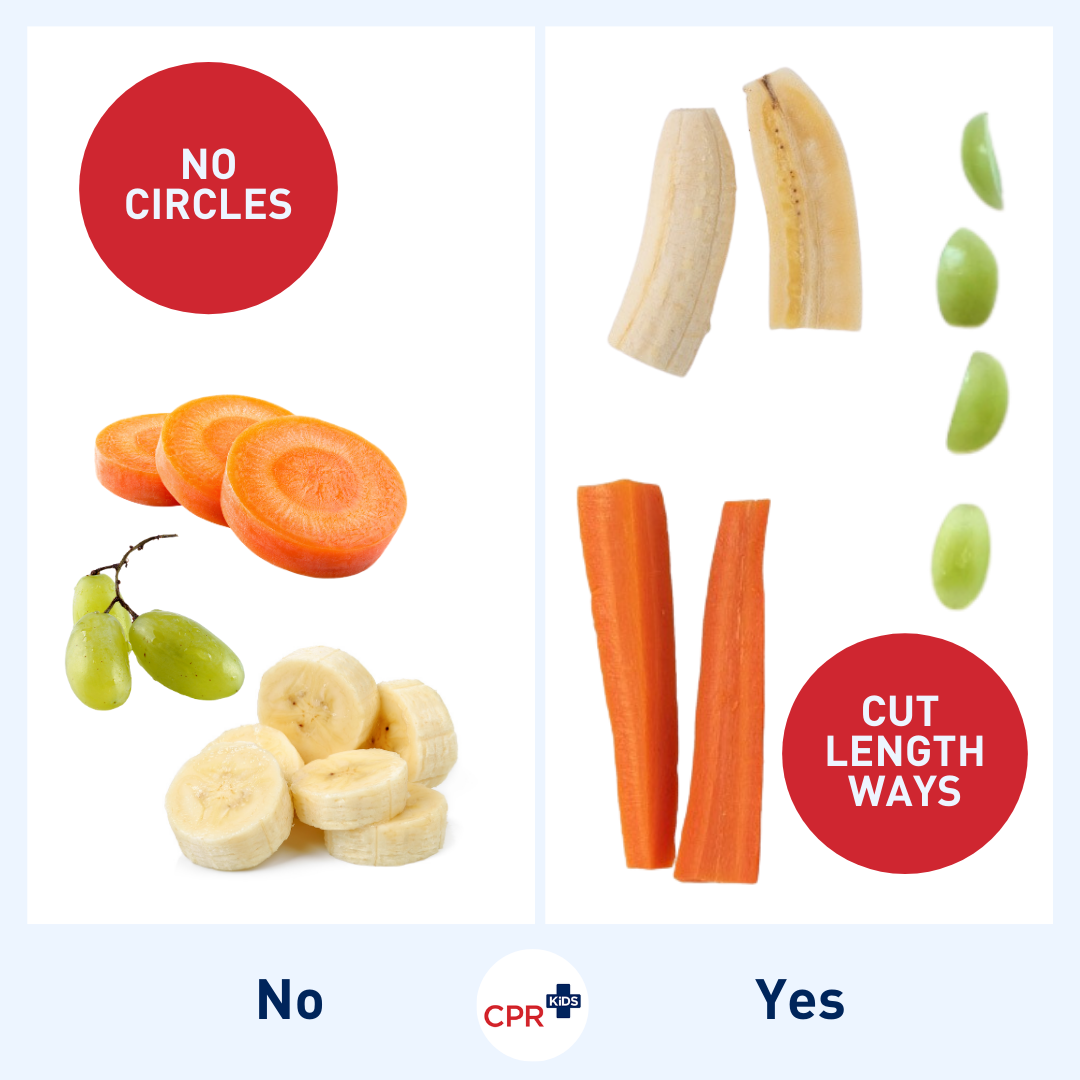When it comes to choking, prevention is always better than cure.
We can’t and shouldn’t wrap our kids up in cotton wool either – otherwise we would still be feeding our teens puree! Choking accidents do happen, and it is important to know the first aid if your child does choke. However there are four actions we can take to reduce the risk of choking in little ones. Here are the four S’s of choking prevention:
- Shapes
- Sitting down
- Supervise
- Search

Shape of foods:
Cutting up foods into developmentally appropriate size shapes is key to prevent choking. Round foods such as grapes, cherry tomatoes and large blueberries are the perfect shape to lodge in a toddler’s airway and should be cut into quarters, and cylindrical foods such as bananas, sausages and carrots cut into sticks. Avoid foods such as popcorn, marshmallows, hard sweets and whole nuts in young children.
Sit down to eat:
The risk of choking increases if a child is running around with food or another object in their mouth. Sitting down together to eat meals not only reduces the risk of choking, but is great bonding too. Encourage your toddler to sit down when snacking too (good luck!).
Supervise when eating:
Although it is tempting to ‘get stuff done’ whilst your child is occupied eating and strapped into the high chair, choking can be silent. Always keep them in your direct line of sight when they are eating so you can be aware and intervene quickly if a choking accident occurs.
Search your home:
Anything that can fit through a cardboard toilet paper tube is a choking risk for young children. Get down onto your hands and knees and crawl around your house. This will give you a better perspective as to what your child sees! What small objects are in reach? Common household objects such as coins, erasers, button batteries, hair clips, marbles, bouncy balls, beads and small toy parts are all choking hazards and should be kept out of reach.
Most importantly, we need to remember that accidents can still happen – make sure you know the first aid for choking so you can confidently help your child in an emergency.









